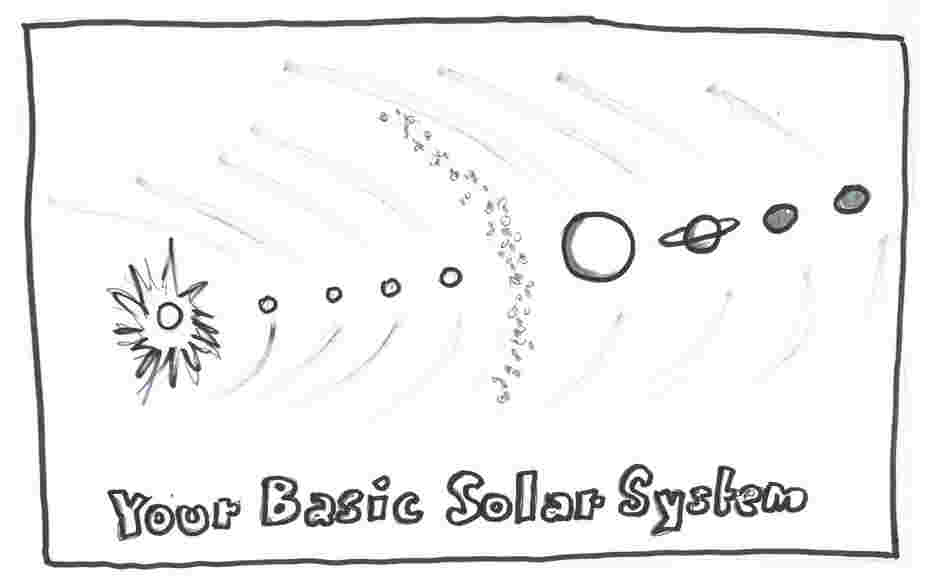
Image Credit: Robert Krulwich/NPR
Yesterday, I was going on about the Sun. Today, Robert Krulwich, of NPR’s science desk, has a very interesting piece up today on a blog that is written and illustrated by him.
It’s called, Our Very Normal Solar System Isn’t Normal Anymore.
He’s not just talking about this because scientists kicked Pluto to the curb, you know. There is more to it than that. Have a taste,
As of this month, we’ve discovered 884 planets, 692 planetary systems, 132 of them with more than one planet and, strange to tell, almost none of them look like us.
“We are now beginning to understand that nature seems to overwhelmingly prefer planetary systems that have multiple planets with orbits of less than 100 days,” says Steve Vogt, astronomer at the University of California, Santa Cruz. “This is quite unlike our own solar system, where there is nothing with an orbit inside that of Mercury. So our solar system is, in some sense, a bit of a freak and not the most typical kind of system that Nature cooks up.”
All of sudden, we’re the abnormal ones. We have to figure out why our solar system turned out different from all the others.
The newest explanation is that new planets don’t stay put. They move. A gassy planet will form on the far side of the frost line, orbit for a while, and then gradually move inward, pulled in closer by the star. It stops only when the sun pushes back (via strong T Tauri winds that come with the start of nuclear fusion).
Did We Once Have A Big Sun-Snuggling Planet?
Maybe we once had a big gassy planet close to our sun, but it didn’t survive. It became part of the Sun. Or maybe it got ejected — astronomers are finding emigrant planets, lonely orbs that wander the universe with no star, just drifting. Maybe one of those used to live here.
Or — maybe Saturn and the Sun played a gentle tug-of-war. There are computer simulations that suggest Saturn’s gravitational tug kept Jupiter from sailing inwards, so the giants drifted a little closer — then stopped. The truth is, we don’t know.
Mike Brown, an astronomer at Caltech, wrote me that while everybody is busy hunting for an Earth-like planet, they missed this story. “Before we ever discovered any [planets outside the solar system] we thought we understood the formation of planetary systems pretty deeply.” We had our frost line. We knew how solar systems formed. “It was a really beautiful theory,” he says. “And, clearly, thoroughly wrong.”
I’m reminded again of this excellent video that attempts to show us the known universe in a few minutes time.
Catholics dig science, see, and the Catholic Church even has an Observatory staffed with scientists who are admiring God’s handiwork while searching for answers to unlock the mysteries of the creation of the universe. Hildegard of Bingen, a nun, mystic, saint, and newest Doctor of the Church, lived from 1098 to 1179 AD and wrote the following lyrics to an antiphon she composed called, Cum processit. Here is a translation of it into English by Mark Atherton,
When creation came forth from the finger of God
fashioned in God’s image
created of mixed blood
along the exile-path of Adam’s fall:
then the elements received
the joys of life.
O Mary, worthy of praise.
As heavens shine red
they sound forth your promise.
Indeed.











